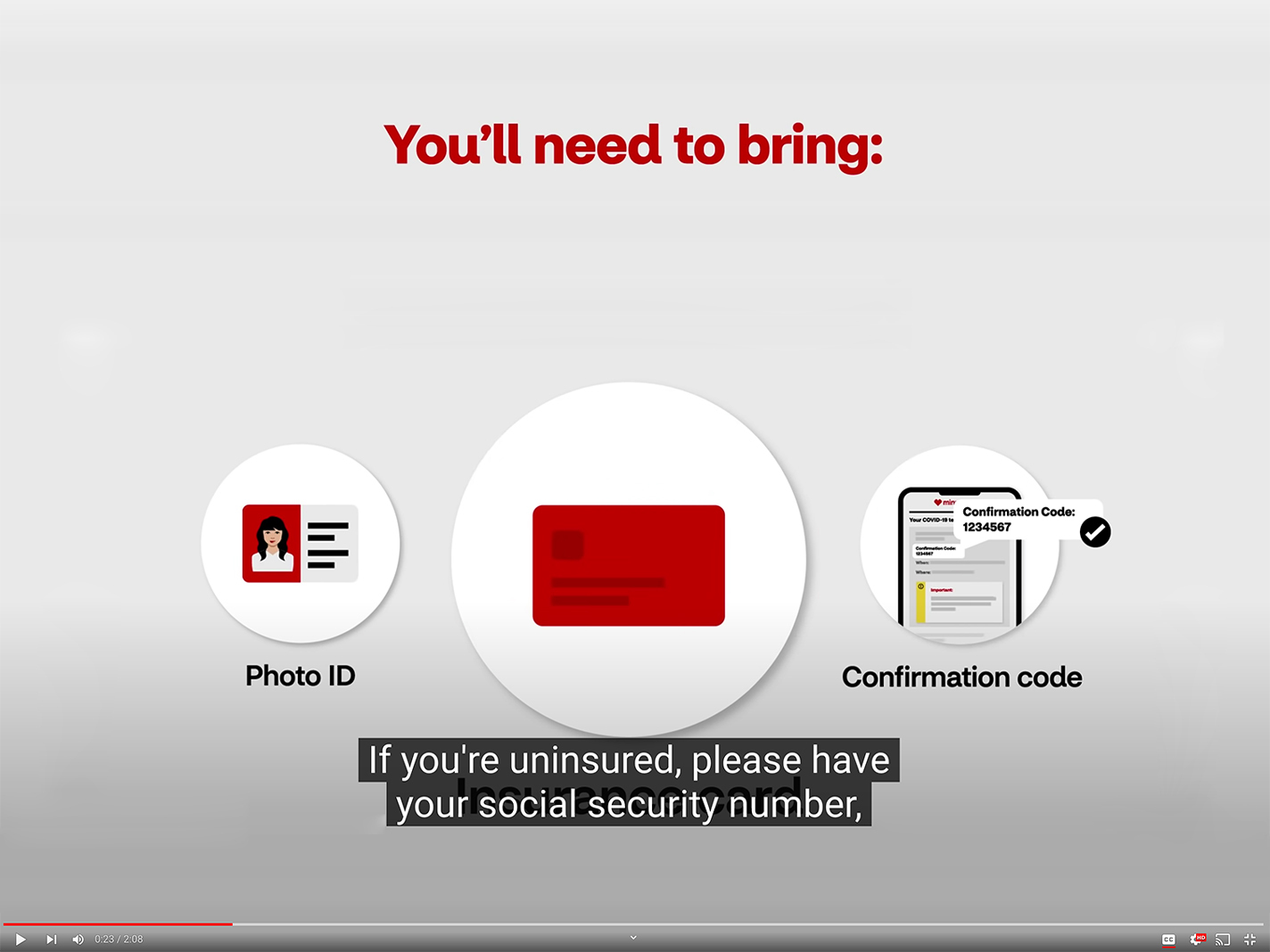During the global pandemic, we created a video to change human behavior. That video, “Preparing for your COVID-19 Test”, has been viewed more than 11 million times and there are thousands of positive comments on our Fortune 4 client’s YouTube page. Now we get asked, “How’d you do it?” We’ve put together the steps to create a successful explainer video that solves problems and makes people happy.
Seek, solve, strategize
First, it’s crucial to understand what problem you are trying to solve and why. Once these strategic goals are nailed down, it will make it easier to discover the most engaging and effective way to convey that message.
We needed to help CVS Health improve the COVID-19 drive-thru testing process, quickly. Most people were not familiar with self-swab COVID-19 testing at the time. Testing was taking way too long and precious tests were wasted or yielding inconclusive results. The video needed to help people perform their self-swab COVID-19 test successfully and efficiently while reducing the burden on the taxed health care team.
Be clear and concise
Set time aside to have all key content creators in the same room, even if it’s virtually. Keep the creative process energized and in forward motion by doubling down on real-time collaboration.
Explainer or “how-to” videos educate people and they say and show only what is needed. The instructions need to be very clear for the video to be impactful, so our approach was to keep it simple.
It’s always important to follow accessibility guidelines so audiences of all abilities can have access to the information. We created both English and Spanish closed captions, along with a transcript and an audio description file.
The same content strategy questions that come up for the scriptwriter will inform what the storyboard designer illustrates, which will impact how the animator approaches the motion and the visuals. Get all team members on the same page and in the same room to tell the most cohesive story.
By taking a direct, open communication approach to working sessions and the creative process, we were able to produce the “How to prepare for your COVID-19 test” video in seven days.
Tone the content to the purpose
Every creative decision had to take into account how our audience was feeling. There was a collective fear of the unknown. Many individuals were experiencing pandemic anxiety that was amplified by the possibility of getting a positive test result, which was very distracting. Prioritizing these details was critical to creating video content that would change behavior.
About 85% of Americans live within 10 miles of at least one CVS store, which meant our audience was very broad, so our content needed to be simple and easy-to-understand.
We had to create a video that very clearly explained and demonstrated how to perform the test.
Slow down when explaining
The visuals should always support the script through design and motion. It’s important to thoughtfully select motion speed and music that can enhance the intended tone of your video and help your audience achieve the goal you strategize for in step one.
The animation was almost 50% slower than normal and all of the motion was incredibly smooth. We selected gentle music to further alleviate concern and convey calmness.
Go with what you know and finesse later
We’ve revised the video five times since launch. Sometimes it’s been circumstantial, for example when testing began happening inside CVS Pharmacy® and not just at the drive-thru. But we’ve also created new versions because this was a complex, whirlwind process and after posting the first video to YouTube, we realized there was a slightly better way to communicate portions, and we improved those for an even better experience.
Read our blog post about the billion reasons why accessibility means business.



